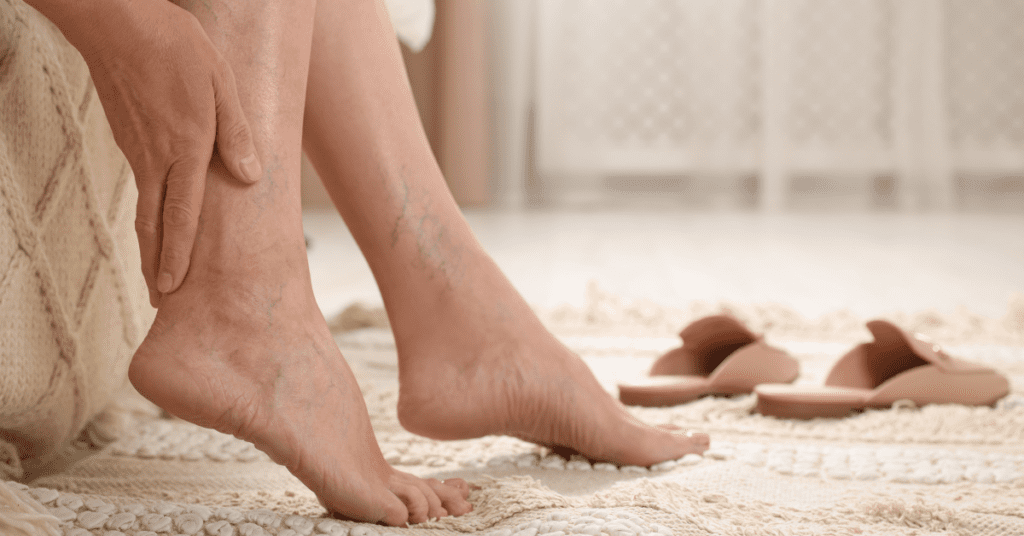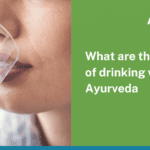Varicose veins are a common condition characterized by swollen, twisted veins, usually occurring in the legs. They can be unsightly and uncomfortable, leading many individuals to seek treatment options. According to Ayurveda, varicose veins are primarily caused by an imbalance in the Vata and Pitta doshas. Vata governs circulation and movement, while Pitta controls metabolism and heat in the body. When these doshas are aggravated, it can lead to weakened blood vessels and poor circulation, contributing to the development of varicose veins.

Understanding Varicose Veins And Its Signs and Symptoms
The Siraja Granthi, Siragata Vata, and Vata-Rakta rogas in Ayurveda are similar to Varicose Veins and can be managed with Raktmokshana through Siravedha or Leech therapy, along with internal and external medications. Raktamokshana is the primary Ayurvedic medication against Varicose Veins, but it alone is not enough. Prescription of secondary medications, including internal and external ones, is essential for an enduring cure. In Ayurveda, varicose veins are understood as a manifestation of vitiated Vata dosha primarily, along with aggravation of Pitta dosha. The signs and symptoms associated with varicose veins according to Ayurveda include:
- Visible Swollen Veins: Varicose veins appear as bulging, twisted, or enlarged veins, often visible through the skin, particularly in the legs and feet.
- Pain and Heaviness: Individuals may experience pain, heaviness, or aching sensations in the affected areas, especially after prolonged standing or sitting.
- Fatigue and Weakness: Varicose veins can cause fatigue and weakness in the legs due to impaired circulation and venous insufficiency.
- Cramping and Throbbing: Some individuals may experience muscle cramps, throbbing, or a sensation of fullness in the legs, particularly at night.
- Discoloration of Skin: The skin overlying varicose veins may appear discolored, with areas of redness, brown pigmentation, or even ulceration in severe cases.
- Itching and Irritation: Varicose veins may be accompanied by itching, irritation, or a feeling of heat in the affected areas, especially during warmer weather.
- Complications: In advanced stages, varicose veins can lead to complications such as venous eczema, dermatitis, or venous ulcers, which require prompt medical attention.
Ayurveda Treatment of Varicose Veins
Varicose veins conventional management involves compression stockings, foot elevation, antibiotics, and regular cleaning and dressing. If left untreated, ulcers can lead to wound infections, increased pain, swelling, redness, and loss of mobility. Severe complications like osteomyelitis, septicemia, or malignancy may occur. Recurrence of venous ulcers is common, ranging from 54 to 78% by the fifth year after healing. Despite advances in health sciences, managing varicose ulcers remains a challenging task for surgeons. Ayurveda offers various treatment modalities which help in managing varicose veins effectively:
- Internal Medications: Ayurvedic formulations containing herbs with Vata-pacifying and Pitta-reducing properties are prescribed to address the underlying imbalances. These may include Guggulu, Triphala, Arjuna, Ashwagandha, and Brahmi, among others.
- External Applications: Localized treatments such as herbal pastes, oils, or poultices are applied externally to reduce swelling, inflammation, and pain associated with varicose veins.
- Sira Vyadha (Bloodletting Therapy): This ancient Ayurvedic technique involves controlled bloodletting from specific points on the body to improve circulation, alleviate congestion, and reduce swelling in varicose veins.
- Sneha Basti (Medicated Oil Enema): Basti therapy, which involves administering medicated oils rectally, can help balance Vata dosha and improve circulation, thereby reducing the symptoms of varicose veins.
- Lifestyle Modifications: Ayurveda emphasizes the importance of dietary and lifestyle modifications to support treatment outcomes. Recommendations may include following a Vata-pacifying diet, regular exercise, maintaining proper posture, and avoiding prolonged periods of standing or sitting.
- Yoga and Pranayama: Specific yoga asanas and breathing techniques are prescribed to improve blood circulation, strengthen the muscles, and reduce stress, which can alleviate symptoms associated with varicose veins. Poses such as Viparita Karani, Sarvangasana, and Matsyasana are beneficial.
- Panchakarma Therapy: Comprehensive detoxification and rejuvenation therapies, including Virechana (purgation) and Vasti (enema), may be recommended to cleanse the body of toxins, balance doshas, and promote overall well-being.
References:
- Garg, N., & Jain, A. (2017). Ayurvedic perspective of varicose veins. World J Pharm Res, 6(3), 296-310.
- Suden, A. Management Of Varicose Veins: An Ayurvedic Review.






